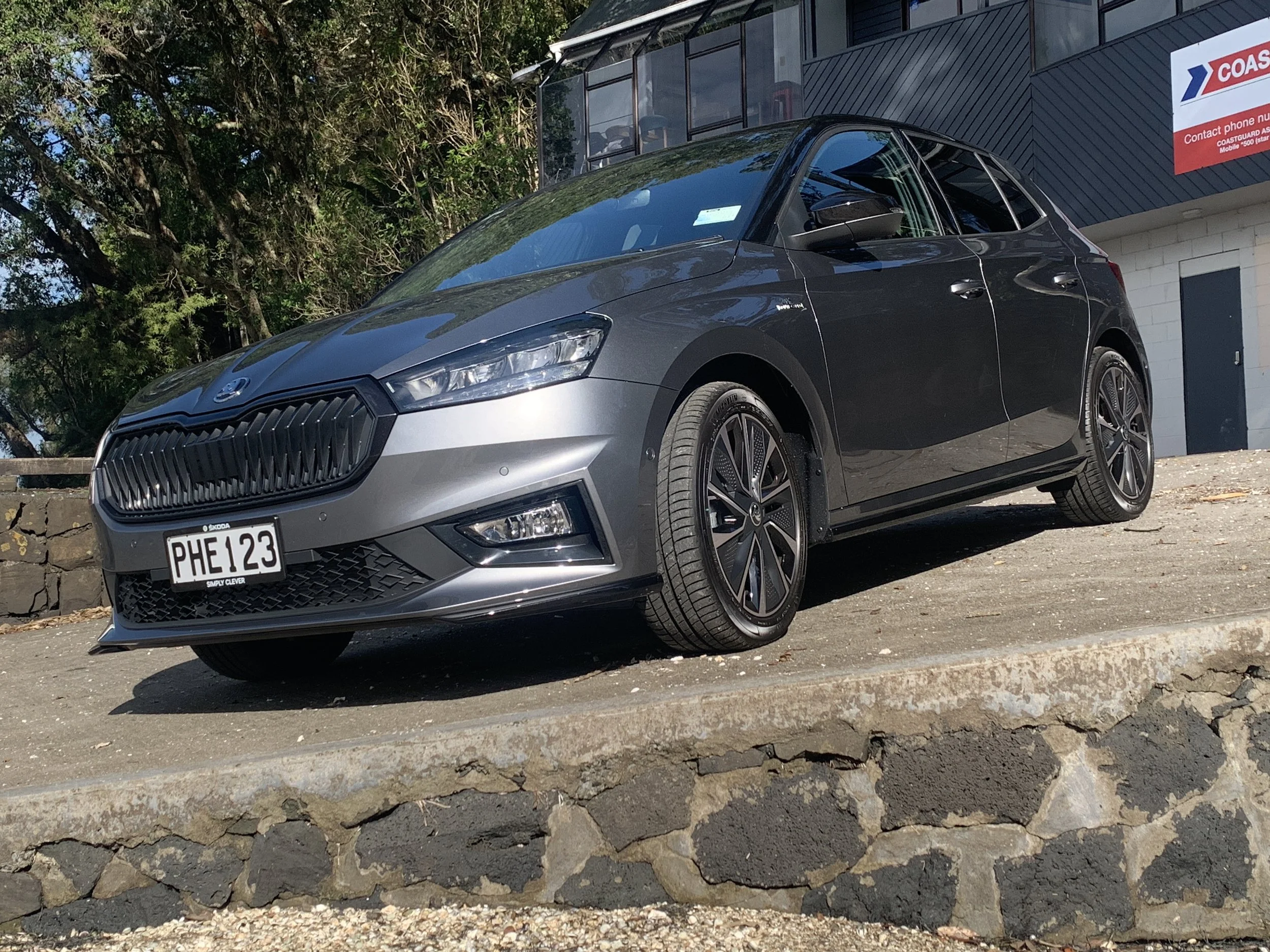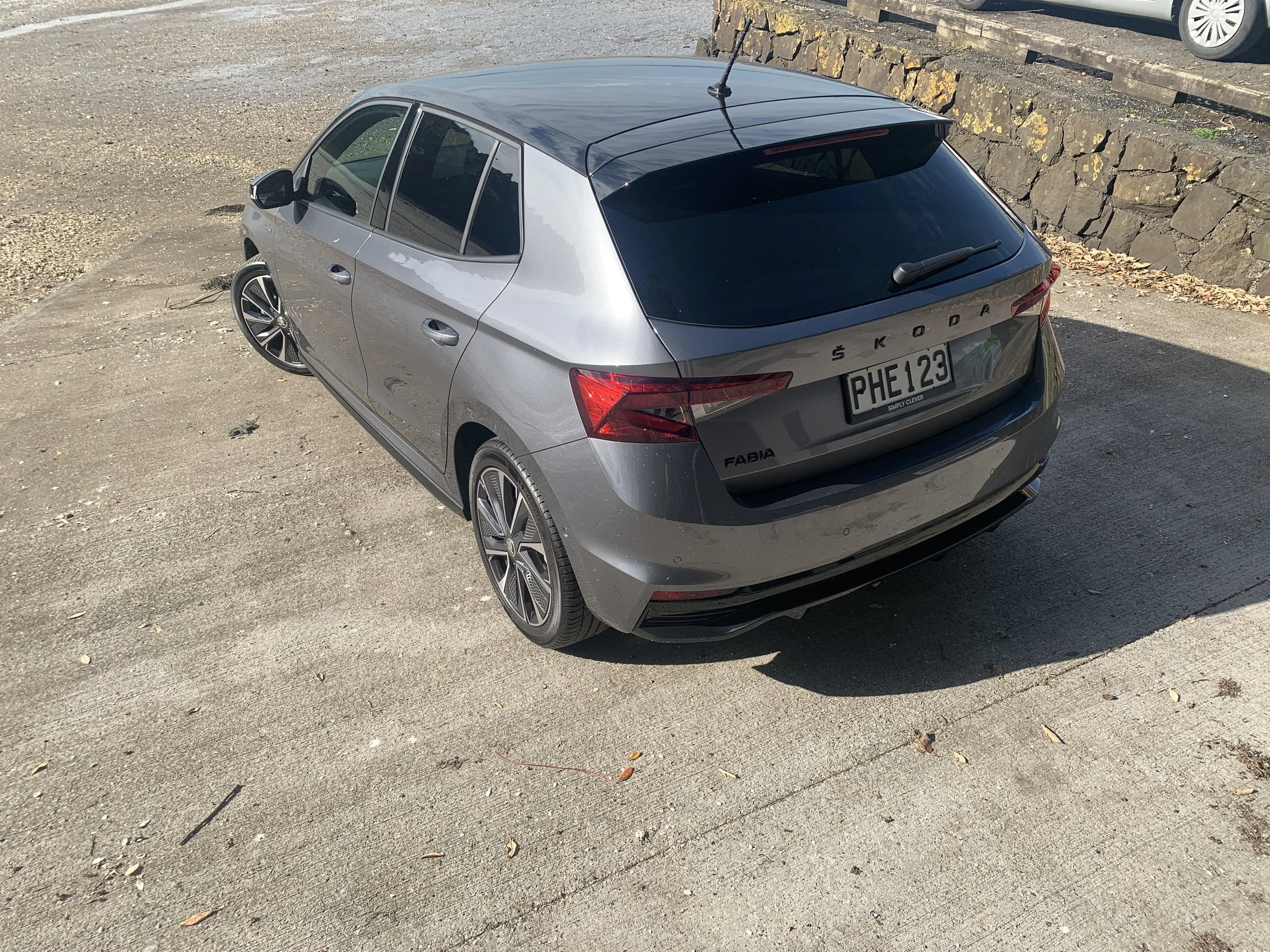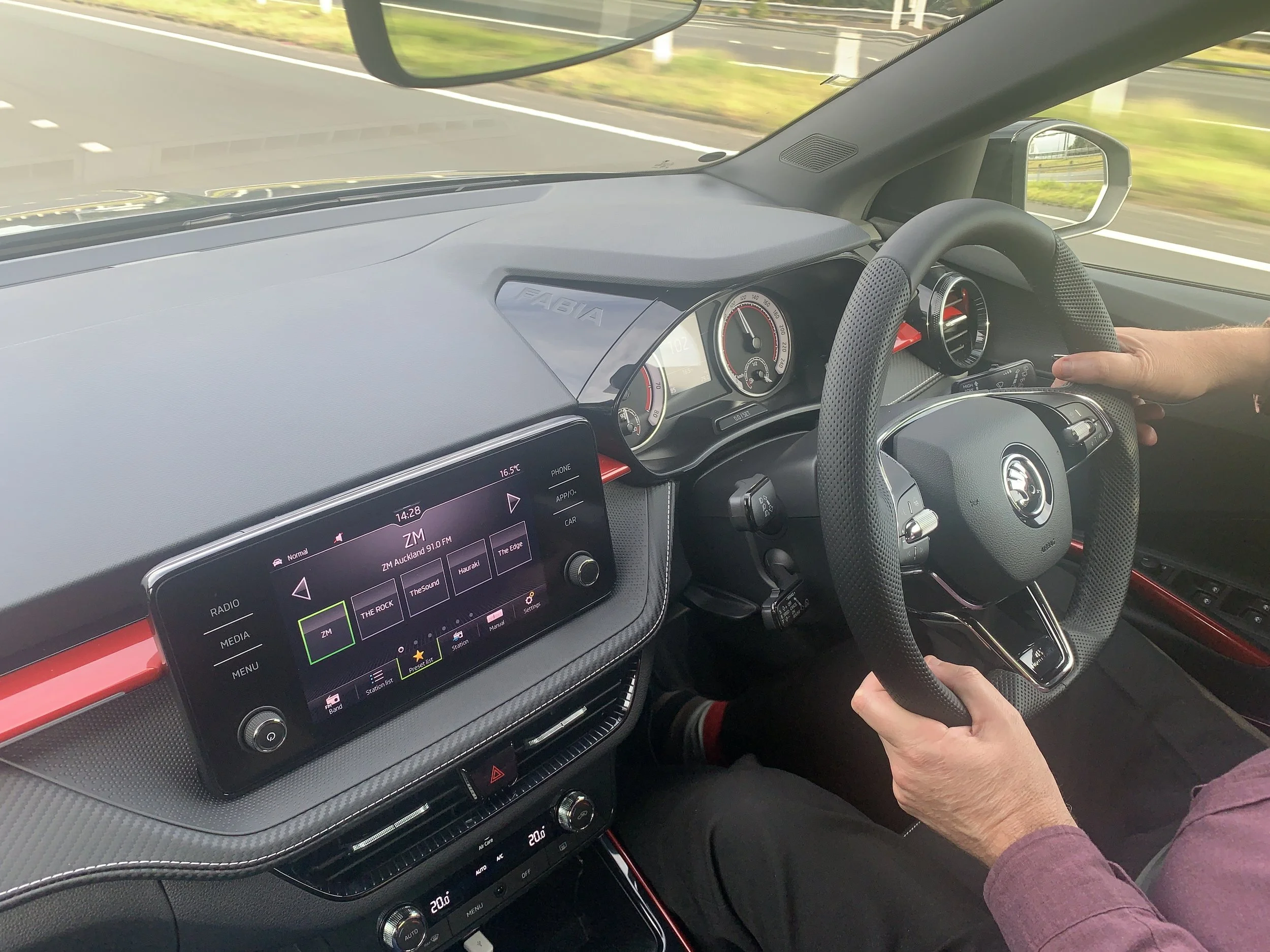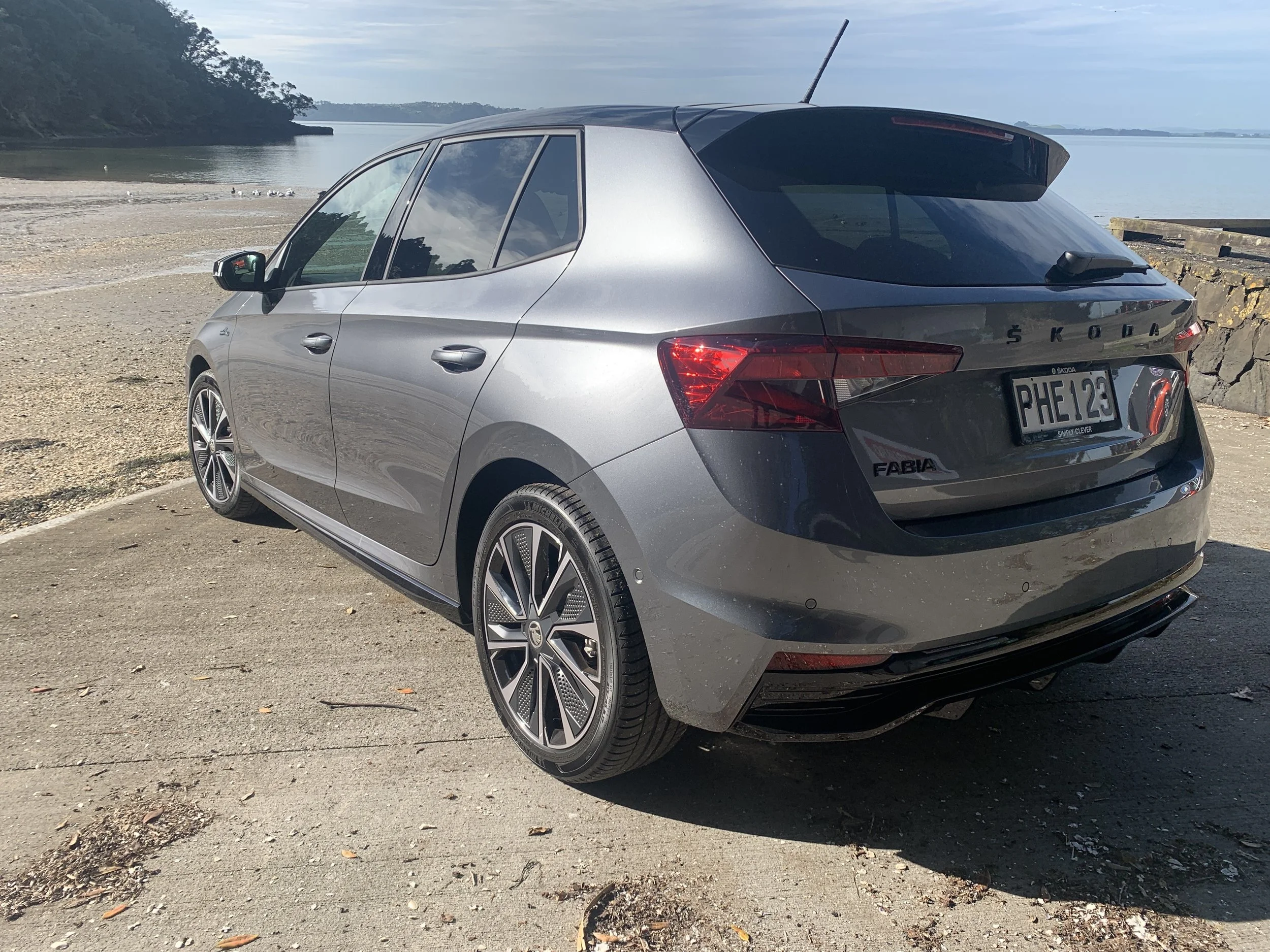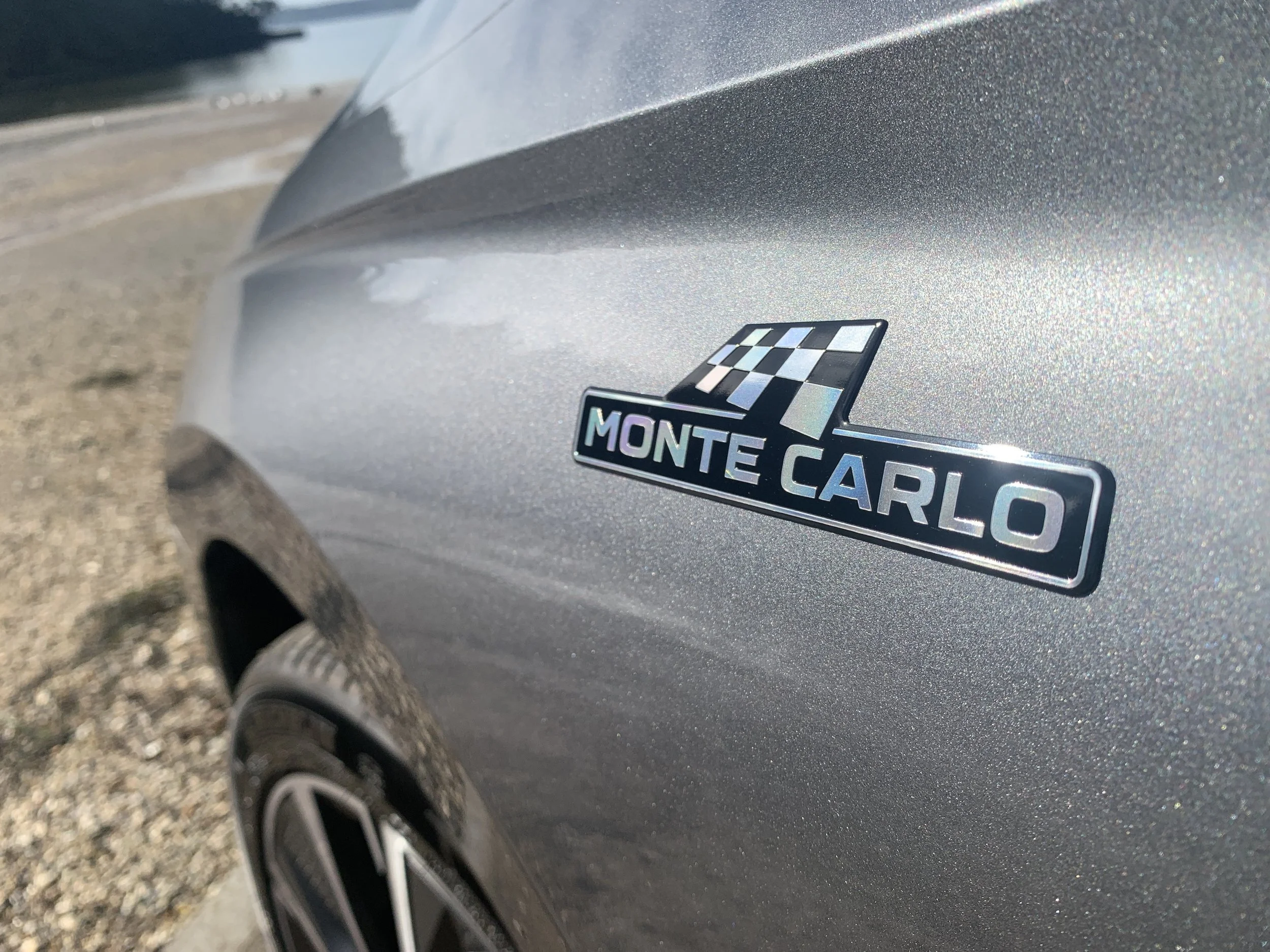Skoda Fabia Monte Carlo first drive review: Peak performer an easy ascent
/Another rally-themed hatch? This one stands out by being less raucous than some perceived rivals.
‘SPORT’ in Skoda-speak relays as RS – sometimes preceded by a small ‘v’, sometimes not - and as Monte Carlo, each descriptive relating to competition heritage but with differing degree of intensity.
Fabia, a compact hatch that stands as this make’s smallest offer here, first sold (in its second generation) as an RS, packing a clever twin-charger turbo engine. The following evolution’s performance model, however, bore the Monte Carlo badge – which also dates back 11 years and was introduced to mark consecutive podium finishes at the eponymous rally – and ran a 1.0-litre three-cylinder.
The just-landed fourth generation lays a bet on both badges; a Monte Carlo with a 1.5-litre and a RS with a 2.0-litre, both turbocharged petrol fours. The one whose label is a shorthand for ‘rally sport’ is the green car pictured (below), which this time is reserved purely for serious players. It’s now specifically a competition device, for the World Rally Championship. If you see it here – and let’s hope we one day do - then it’ll be bearing sponsorship, numbers and spitting gravel.
Skoda’s specific WRC commitment is to WRC2 (aka Rally2); the category that quite literally follows – you could say ‘eats the dust of’ - the main WRC field in which Hyundai, Toyota and Ford play, but is nonetheless a massively beneficial brand-building phwoar zone.
Skoda has been setting the WRC2 pace since 2017 and the new RS won’t be easily trumped, as it appears to absolutely exploit all the mechanical and design liberties the rules allow. The engine is that from the vRS Octavia and Kodiaq road cars sold here, tuned to make 215kW and 430Nm.
It gets a special transmission and suspension, outrageous aerodynamics – including a massively extrovert wing. But unless you have a motorsport licence, a big wad of cash – they reckon at least $200k - and a Skoda-ticked campaign, it won’t be in your garage or mine. A pity. Were it able to be made road legal every other compact performance hatch on sale here would assuredly wet itself.
The Fabia Monte Carlo doesn’t pose that threat. As much as its 110kW/250Nm mill has snap (the power has, after all, lifted 29kW over the predecessor engine) and appealing muscularity, based on experience from this first drive, it’s much less the fully Monty in delivering a ‘rally car for road (or track)’ experience than the Hyundai i20 N, Ford Fiesta ST or Toyota GR Yaris.
As oxymoronic as that sounds, this might play advantage to the Monte Carlo. As much as outright feral is exciting, it can sometimes be almost too involving when employed for daily driving.
Plenty of marketing types will attest there’s absolutely a place for something small and with a bit of urge but without the hard-edged shoutiness normally associated with a fully kitted supermini.
That’s the Monte Carlo. It’s still rapid and handy enough to warrant having the chequered flag emblem emblazoned on each front wing and will likely, on the right roads, prove to be as fun and frisky as you’d want. Yet it also has enough of a relaxed and comfortable ambience to open it to a broader audience. Which probably makes it a safer sales volume gamble for a brand on a continual rise.
All the same, when all bets are on this single model, it needs to be a winner. The latest generation Fabia line-up again includes more budget-minded 1.0-litre editions, but their availability here will depend on how the market reacts to this one.
A whole new car, on a wholly new platform, with lots of fresh tech allows Skoda to push upmarket; the enhanced plushness and polish is patent. Is it better buy-in? They’re gambling on that. At $39,990, this Monte Carlo is $10k more expensive than the last.
So, migration to the Volkswagen Group's latest 'MQB A0' architecture, an underpinning shared with the Volkswagen Polo (which won’t sell here) comes at a cost. Yet it’s undeniably a good move, all the same. The car’s feel is far more solid, more ‘engineered’ than previously; the use of stronger steels, more accurate construction methods, a body being 48mm wider than before. All impact positively on the driving demeanour. It’s quieter, too.
That it also achieves a far more advanced electronic architecture that allows a suite of new driver-assistance and safety technology lacking from the old car, whose electronic strength was too poor to allow it to carry electric folding wing mirrors, also has to count as being beneficial.
In respect to active safety features, it’s on par with all other new Skodas, getting autonomous emergency braking with pedestrian and cyclist detection, adaptive cruise control with an active function that works well beyond 100kmh and also with stop and go, lane-centring assist, rear cross-traffic alert, semi-autonomous parking and nine airbags.
The NZ specification doesn’t currently have blind spot warning, but will once the semiconductor shortage has been resolved. Only new cars from that point will take it; it’s not a facility that can be retro-fitted. Removing it doesn’t degrade the five star NCAP safety rating.
The update also means dual-zone climate control, wireless phone charging, and a seven-speaker sound system. Rather than the 6.5-inch infotainment system found on cheaper models, there’s an eight-inch screen as standard, with the option (for $1000) of a larger 9.2-inch screen with gesture control. Also cost extra is a 10.25-inch digital dash to replace standard, and old-school looking, analogue display.
The car now accepts Apple CarPlay and Android Auto, tethered for now via a USB-C socket but set to become wireless (as per larger Skodas), again once the semiconductor shortage eases.
So it’s better stacked. And, let’s agree, more stylish, too. Not only does the widened platform lend a better stance and free up appreciably more interior space (not just within the cabin but also the boot, whose volume lifts 50 litres to 380 rear seats up, 1190 seats down), but a host of neatly integrated exterior design changes to distinguish it from the standard Fabia provide some genuine pizzazz.
A front grille and a new front apron with wider air intakes; a rear diffuser, side skirts and window surrounds, all also finished in black, are neatly rendered treatments, conforming to the same trend set by the Scala and Kamiq Monte Carlos but looking especially brilliant on this square-cut newbie, particularly with the newest hues, a either metallic grey and a daring burned orange hero paint colour.
Like the Kodiaq RS, it has removable plastic wheel trims to cut down drag. The cooling shutter slats also automatically open and close to improve aerodynamics, giving the Fabia ‘benchmark’ slipperiness of 0.28.
Seventeen-inch alloys (with 18s as an option), LED headlamps with auto-dip from high beam, the option of LED tail lights, revised front and rear bumpers also fuel the racier makeover. Buyers benefit from sports seats, a leather-trimmed handbrake and gearstick gaiter, stainless steel pedal covers, red stitching for the upholstery and a new sports steering wheel with a ‘Monte Carlo’ badge. Skoda has also added some red inserts to the dash and door cards, as well as some carbon fibre-style trim to lift its game.
While the Monte Carlo isn’t necessarily a gamechanger for its class in respect to ultimate output, this is still the most powerful version to run in a Fabia since that 2010 car. The test cars were brand new and still tight, but having already been used to successfully motivate three other Skoda models, including the heavier and physically larger Octavia, bodes well for this unit’s provenance.
An introductory drive route through western Auckland allowed no opportunity to dig deep into the dynamic character; it was urban all the way, with low speed zones and endless road works. It seems to turn in well and have good grip. The ride is very liveable.
I suspect it’ll reveal to be powerful enough, if not a total firebrand, but it’ll be the ‘everyday’ side to the attitude and ambience that’ll resonate most.
It’ll be a good choice for those mainly urbanite in their usage who will nonetheless want to use the car for decently long journeys. The cited 0-100kmh time of eight seconds, economy of 5.4 litres per 100km and CO2 count of 125 grams per kilometre, as judged by the 3P-WLTP scale, all speak to certain expectations.
There’s not much burble from the exhaust and there are occasions when you wish the seven-speed direct shift dual clutch transmission could be smoother and more responsive; uphill starts on the example I drove were jolty. There’s a sport shift setting, and you can manually motivate with the gear stick, but the lack of paddles is a disappointment.
Hatchbacks have in the past taken a hit from the big swing to crossovers and sports utilities, but Skoda here senses potential for the market to swing back a bit. There’s comfort within the brand in knowing that it has both bases covered regardless; for $5000 more it can offer a Kamiq, the quasi off-road looker on the same platform of mechanical equivalence to the Monte Carlo that also has a slightly higher technical loading and similar for interior space.
The Monte Carlo’s temperature setting is likely to leave some wondering if Skoda might yet spring a surprise and deliver a vRS that more fully exploits the brand’s motorsport heritage. Given how much effort it is already putting into developing electric cars, and acknowledging also that it has to keep a close eye on economy and emissions from fossil-fuelled products, that could be a forlorn hope.
As is, there seems to be quiet relief Volkswagen here has ruled out bringing in the Polo GTI, which has much the same remit but with a 152kW/320Nm 2.0-litre engine; just the thing to trigger a damaging family feud.

